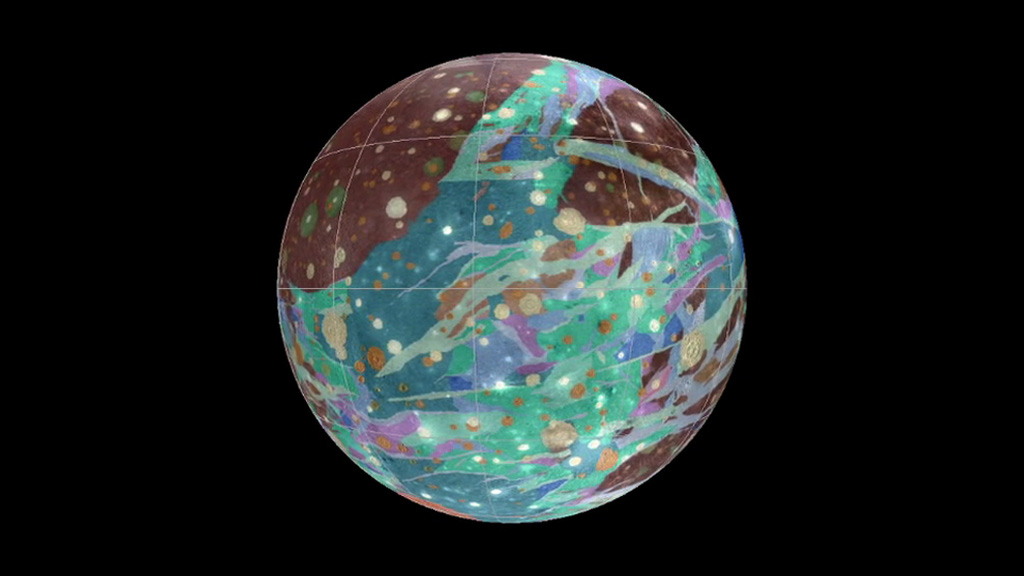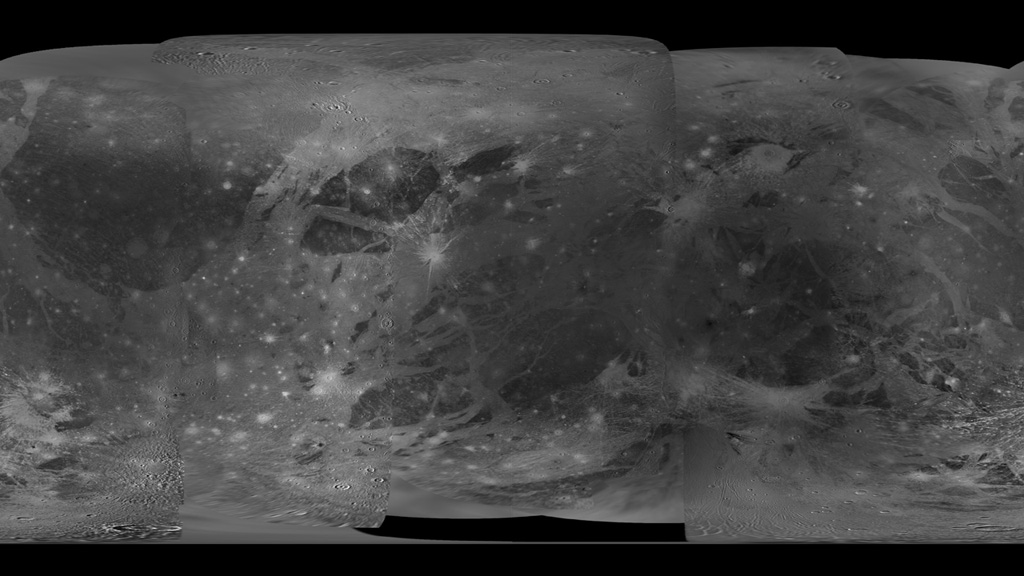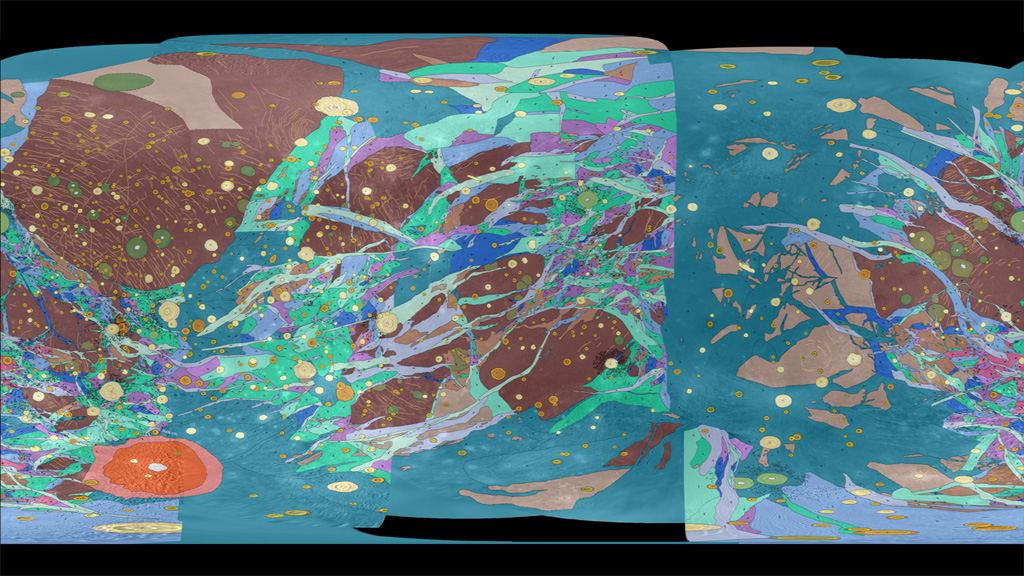Planets and Moons
ID: 11533

Jupiter's moon Ganymede, the largest moon in the solar system, has a rich and intricate geologic history. Roughly two billion years ago, tectonic forces shifted chunks of the moon’s crust, producing extensive faults and ridges that stretched across its icy plains. Other landforms were created over the past four billion years, including legions of craters formed from bombardment by asteroids, meteoroids and comets. Using images collected by NASA's Voyager and Galileo spacecraft, scientists examined nearly every square mile of Ganymede—a sphere bigger than the planet Mercury—and generated a color-coded map that visualizes the age and type of material found on its surface. Watch the video to see a colorful new view of this distant world.



Moon Makeover




For More Information
Story Credits
Please give credit for this item to:
NASA's Goddard Space Flight Center
Video and images courtesy of USGS Astrogeology Science Center/Wheaton/ASU/NASA/JPL-Caltech
NASA's Goddard Space Flight Center
Video and images courtesy of USGS Astrogeology Science Center/Wheaton/ASU/NASA/JPL-Caltech
Short URL to share this page:
https://svs.gsfc.nasa.gov/11533
Keywords:
SVS >> App
NASA Science >> Planets and Moons
https://svs.gsfc.nasa.gov/11533
Keywords:
SVS >> App
NASA Science >> Planets and Moons







